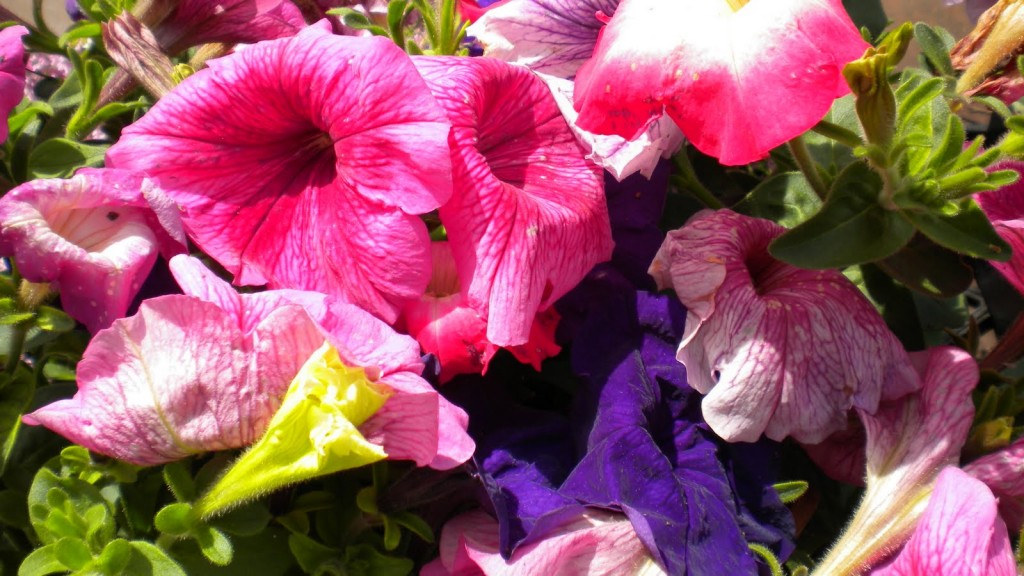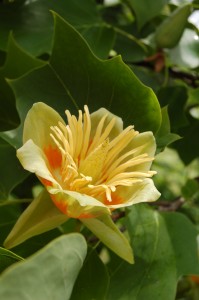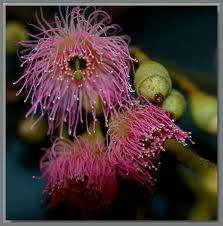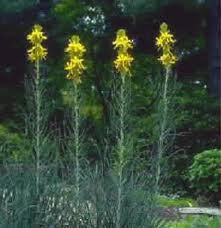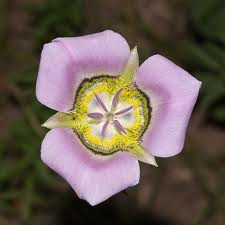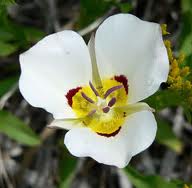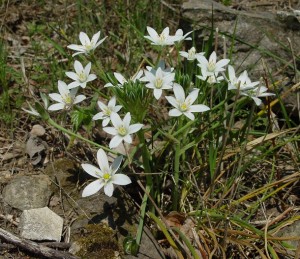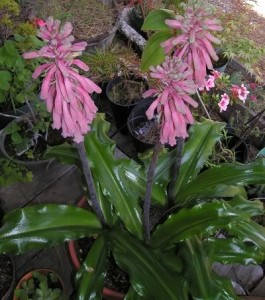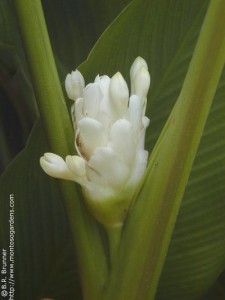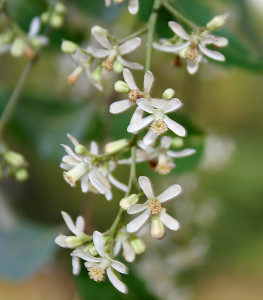Tulip Tree, Eucalyptus, Melaleuca, King’s Spear, Gunnison Mariposa, Sego Lily, Star of Bethleham, Forest Lily, Guinea Arrowroot, Neem Tree
Please ignore the misalignment. I am having wordpress issues they can’t quite seem to sort out.
The blossom of the Tulip Tree, Liriodendron tulipifera, is not edible as far as I know nor would I try it. Other parts of the tree have a heart-stimulating alkaloid that is best avoided. But the flower nectar is drinkable. For just a short time while the tree is blossoming there is a small amount of very sweet nectar in each blossom. It is heavy and honey-flavored. You can drink it directly from the blossom. While early reports say the native made honey from the blossom what they were really doing was collecting nectar. The tree was also called the Sap Poplar, perhaps because its sap is consumable. I don’t know and have not found any reference to said but it wouldn’t surprise me. As a source of nectar the tree also attracts hummingbirds, squirrels and is a host plant for tiger and spicebush swallowtail butterflies.
While on the topic of flowers that are not edible but produce a sweet nectar than let’s add the huge family of Eucalyptus. Here in North America Eucalyptus is usually thought of in medicinal terms, some what in the same category as camphor, one of those aromas in your grand- or great grandmother’s house. Where they are native however, Eucalyptus are significant producers of honey, flower nectar, and “manna” sweet dripping directly from the tree or scraped from leaves. Cornucopia II lists no less than 37 Eucalyptus species producing, honey, nectar, manna and in come cases edible bark and seeds. “Eucalyptus” comes from Greek. “Eu” means “well” and “kaleptos” means covered. Well-covered, in reference to the hidden flowers. The base of flowers are sipped on for their nectar. Incidentally in Greek Eucalyptus is pronounced eff-KA-lip-tos. Blame the difference on Dead Latin.
To compete the trio of sweet flowers that are not edible let’s add the Melaleuca, an invasive nightmare in south Florida. The blossoms and leaves of the M. quinquenervia can be used to make a sweet tea. Usually the tea is made from the leaves and the blossom used to sweeten it. Also called the Paper Bark tree it is used to make temporary huts in the outback as well as containers for cooking food. The Melaleuca is the number one invasive plant in Florida. It was introduced in the late 1800s but got a huge boost after the turn of the 20th century from one Dr. John Gifford. It consumes huge amounts of precious water, is very prolific, and very difficult to get rid of. On the other hand, like the Eucalyptus it is also a prime producer of honey.
Like many European wild flowers the King’s Spear, aka Asphodel, Asphodeline lutea, is found in flower gardens around the world. These days it is appreciated for its looks more than its flavor. However, the ancient Greeks and Romans roasted the roots and ate them like potatoes with oil and salt. Sometimes they mashed them with figs. The flowers are also eaten and have a sweet, delicious flavor. It will grow in any soil and under most conditions, except facing north. Very showy, low maintenance, blossoming for about six weeks from May into June. Harvest roots in fall.
The blossoms of two Mariposa get over looked because so much of the rest of the plants are edible. First the Gunnison Mariposa, Calochortus gunnisonii. The fresh bulbs are easten raw with salt and taste like a raw potato. Fried or baked they have a crisp nut-like texture. Dried they are pounded into flour for use as porridge or mush. The seeds are ground and eaten. And the flowers and buds are eaten raw in salads or as a trail side nibble. The Gunnison Mariposa is found from Mexico to Canada in states bordering or containing the Rocky Mountains.
The second mariposa is called the Sego Lily, Calochortus nuttallii, and is not related to the palms or cycads which are spelled Sago. The bulbs of the Sego Lily are excellent raw, fried or boiled. Preferred ways of cooking include steaming them in pits or roasting them over a smoky fire, each method creating special flavors. The seeds are ground into meal and the whole plant can be used as a pot herb. The flowers and flower buds are eaten raw as a trail nibble or in salads. The Sego has a larger range than its kin above, farther east and west.
The Star of Bethlehem started out in central and southern Europe, North Africa, southeast Asia and presumably Levant. When it came to North America is not known but it escaped. Now it is found in most of North American except the Rocky Mountain states and due north into Canada. Botanically Ornithogalum umbellatum the cooked bulbs are sometime eaten. Raw bulbs have been implicated in animal poisonings.We, however, are more interested in higher up. The flowers are traditionally eaten baked in bread. The unopened inflorescence of a relative, Ornithogalum pyrenaicum, are cooked and served like asparagus. It’s a seasonal food in southwest England around Bath and Bristol.
Closely related to some species in Edible Flowers: Part 18 is the Forest Lily, Veltheimina bracteata. A native to Africa it is found in flower gardens in warmer climates around the world. The species is named for the German patron of botany, August Ferdinand Graf von Veltheim (1741-1801). There are only two species in the genus. The Forest Lily’s inflorescence is a dense raceme of tubular flowers on a long stalk. The color of the flowers vary from pale pink to dusky pink to orange-pink or deep rose pink, occasionally greenish-yellow. The tips of the flowers are sometimes green or spotted with green. Forest lilies flower during late winter to spring. Each flower-head lasts about a month. They are eaten like spinach.
For a plant that has been cultivated for thousands of years Guinea Arrowroot, Calathea allouia, is little known and raised only by subsistence farmers. What they know that few others don’t is that the plant’s crisp tubers taste like sweet corn and rival any gourmet hor d’oeuvres in flavor and texture. The leaves are used like tamales wrapping food to impart flavor. And of interest to us young flower clusters are cooked and eaten. The roots are a traditional Christmas food in the Dominican Republic. The species has been distributed around the world and is found in warm climates. The roots keep their crisp texture even after long cooking. They are usually boiled 15 to 20 minutes. As well as being eaten on its own, they are often an ingredient of salads, mayonnaise and fish dishes.
To round out this set of ten flowers let’s end with the Neem Tree. Neem is known for a wide variety of medical uses. There’s hardly any part of the tree that is not employed in some medical use or another. It is also consider a trash tree and a pest in many areas including the Middle East and sub-Saharan Africa. And what few folks know is that the bitter flowers are edible. They are usually eaten with other food as a premeal appetite or a palate stimulant. Botanically the tree is Azadirachta indica, suggesting it’s native to India. In fact, just last week I was given a Neem sapling. It is now happily in the ground. Incidentally, the young leaves are cooked and eaten, the most common way in water buffalo meat salad. Neem honey is prized and the sap is fermented into a local alcoholic drink. If you don’t have your own Neem Tree the leaves and flowers can be bought in Indian markets.
See Edible Flowers: Part Twenty (link not yet active. )

